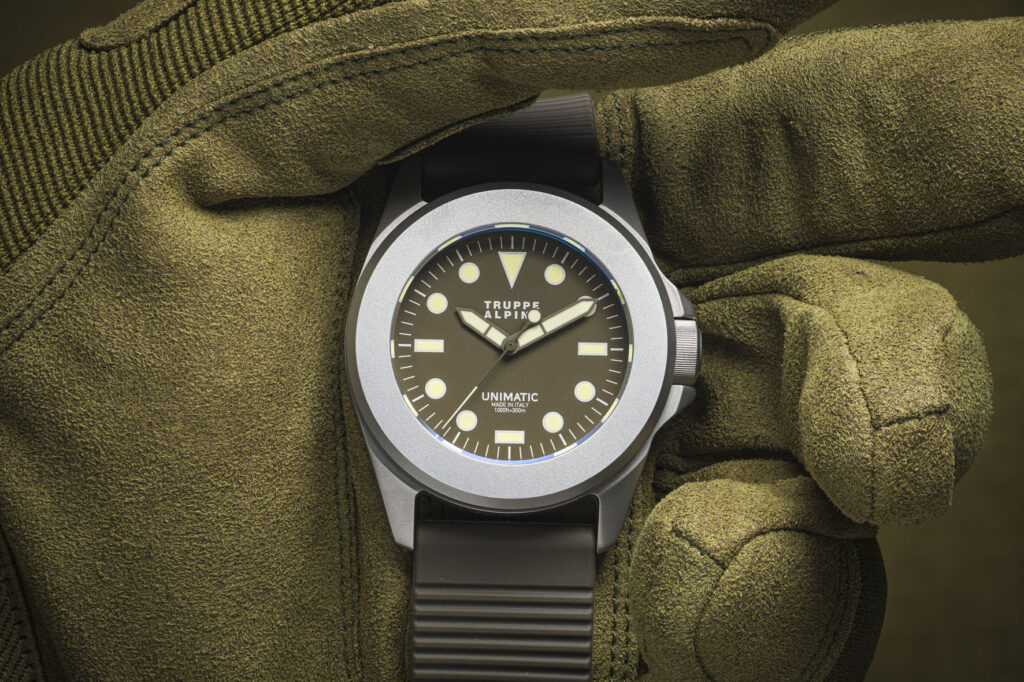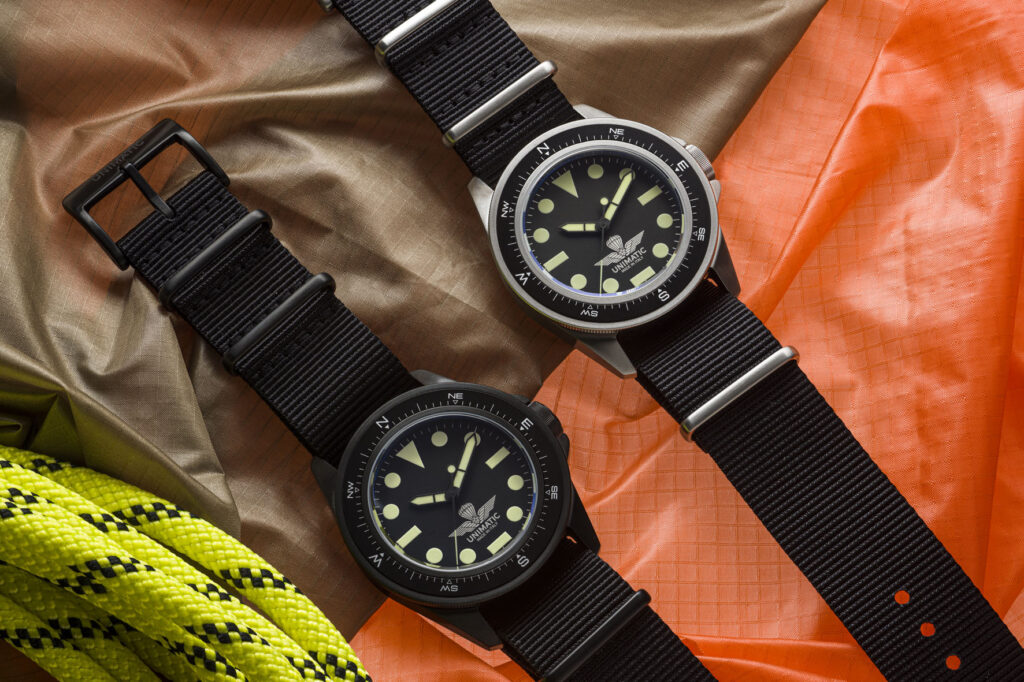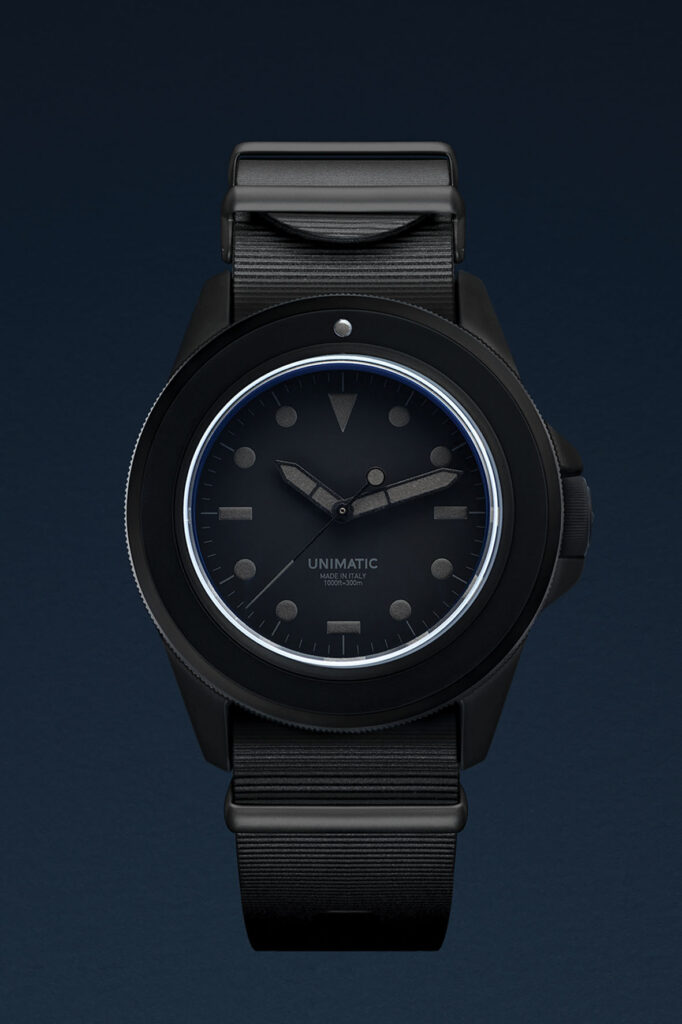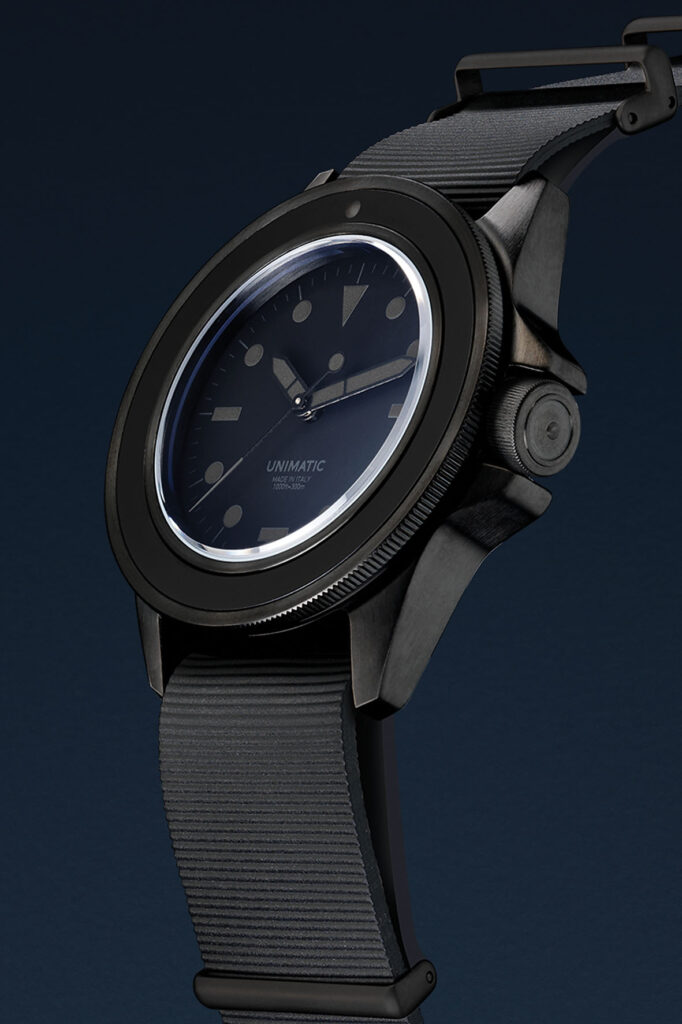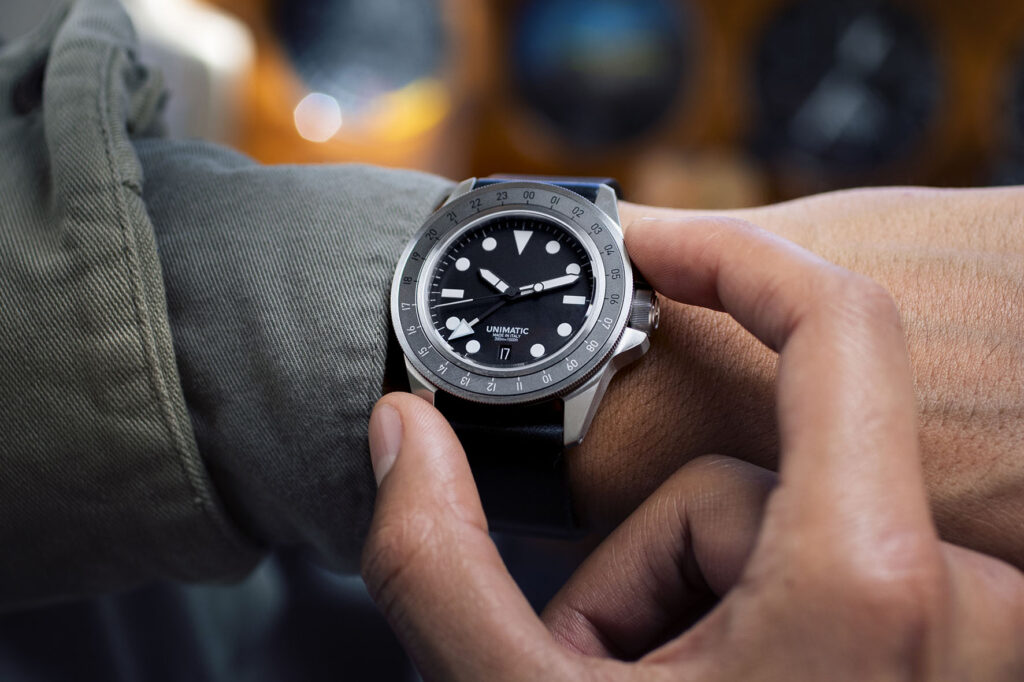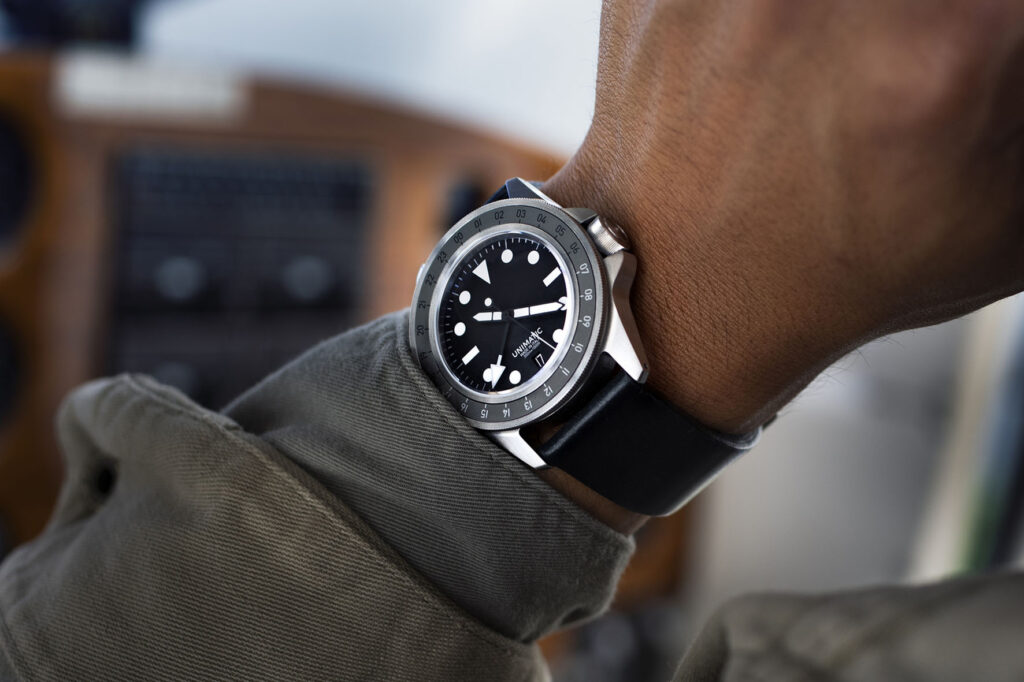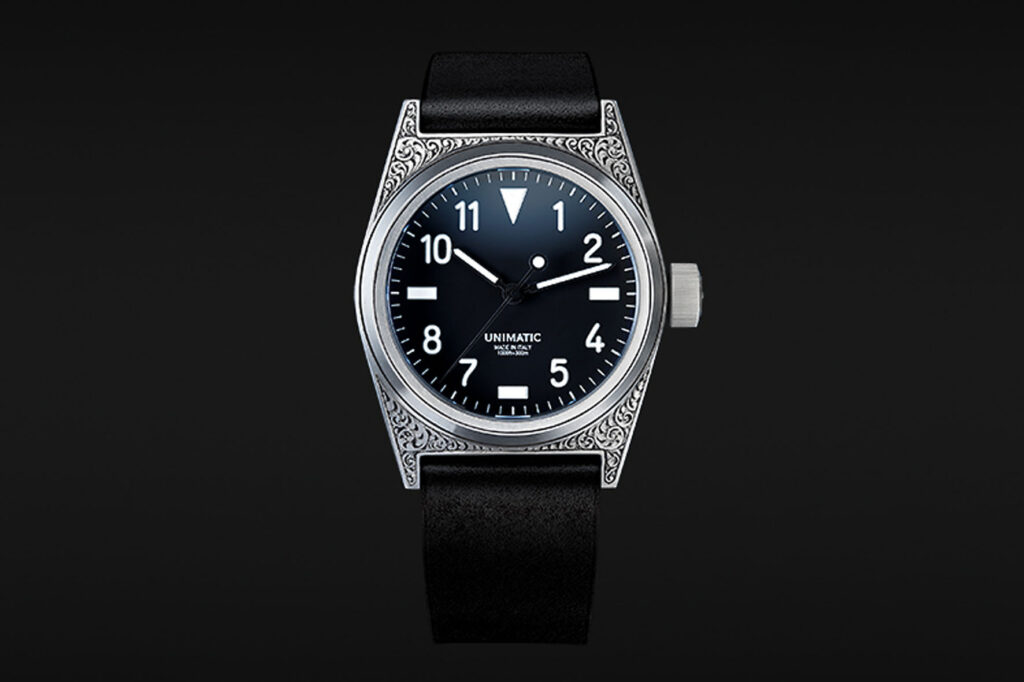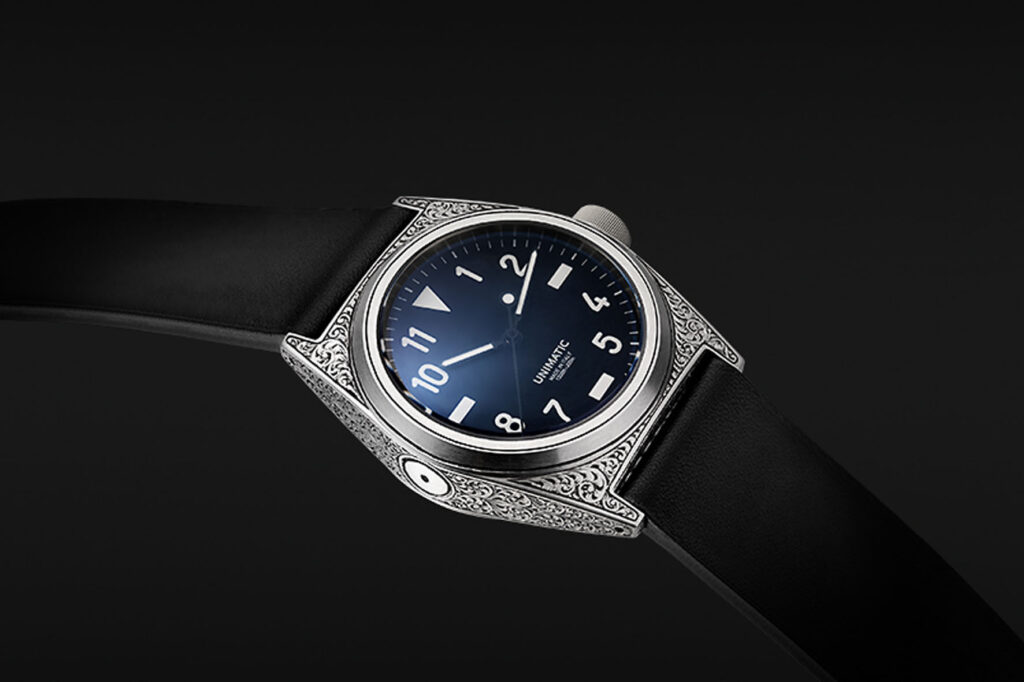UNIMATIC, a dream come true: the smart alternative to mainstream thinking
19 April 2022This is a beautiful and powerful story, because it goes beyond the boundaries of its original domain – the passion for mechanical watchmaking – reaching the universal sphere of dreams come true. It represents the famous “American Dream”, or for us Italians – the protagonists of this story are very Italian – the equally famous “one in a million:” two young people who have a common vision and the strength to realise it in a very short time, and to great effect. Obviously, given the title of this piece, you already know that I’m talking about Giovanni Moro and Simone Nunziato, founders of Unimatic in 2015, both empathic and antithetical to the snobbery that very often belongs to the people in the industry. Unimatic is now one of the coolest brands in the panorama of international watchmaking, with a strong identity for all four lines currently in the catalogue – U1, U2, U3, U4 – and an indisputable reference point in its price range(from 400 to 1,000 euros), with a production that should reach 10,000 pieces by 2022, a facility in Milan with a showroom, a workshop for assembly and after-sales services, and with a series of limited editions which are already sold out as already-cult items, such as the following (among many): Colette, Hodinkee, Massena Lab, Nigel Cabourn, SpongeBob and Nasa. Or the very latest edition with the Italian Army – and more to come soon.
Guys, how does UNIMATIC come true?
GIOVANNI: Simone and I have the “cosmetic” aspect of the product in our blood, while, if we want to talk right away about what we lack, we are less sensitive to technical virtuosity. We were two Industrial Design students at Milan Polytechnic, and we shared a common passion for mechanical watchmaking. Between 2003 and 2005, we were also collectors. He pauses and smiles: we collected watches from of a few famous brands but, above all, we loved vintage Seiko diver watches, which at the time cost a maximum of two hundred euros. After university, we went our separate ways but we kept talking about how a watch could be made to our taste: that remained a constant. Then, at some point, a series of coincidences led us to talk with an Italian supplier who listened to us and agreed to produce our first order of 300 pieces. It was a rather complicated order because we had very precise ideas on everything, from the case to the spheres, every detail was customised from day one, except for the commercial bracelet which was eliminated from the second delivery. Here is the story of how we physically realised our years-long theorising.
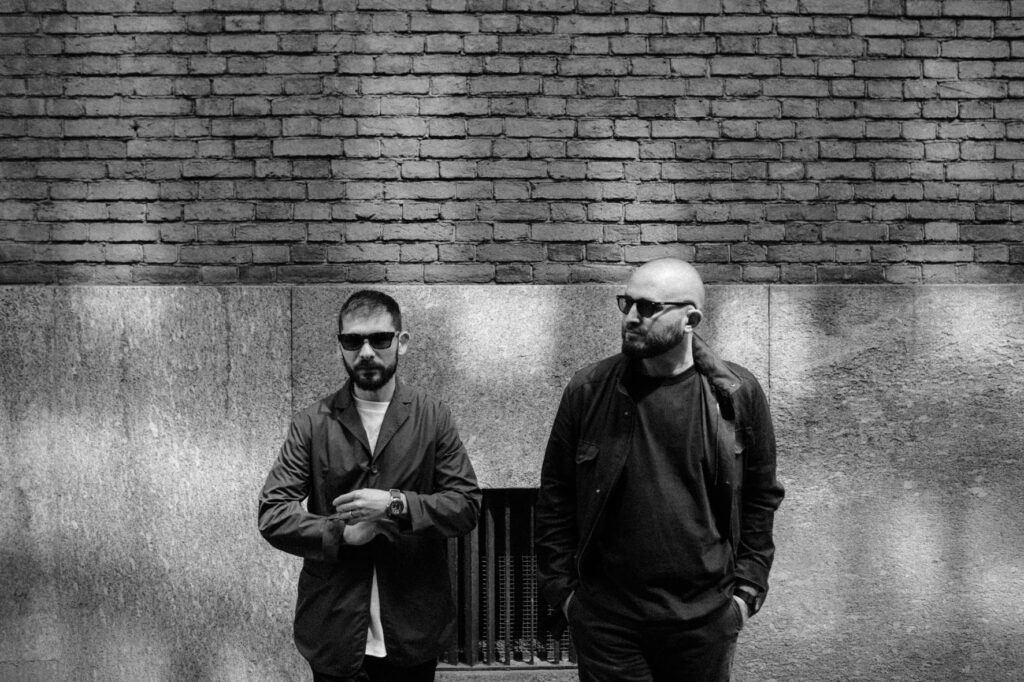
The next step was to market your creation, and an important name immediately came up: Colette. How did that work?
SIMONE: Yes, the Colette shop in Paris was our first point of sale and also our first collaboration. Colette allowed us to get out of the word-of-mouth among our circle of friends and enthusiasts who were looking for the latest products. In addition to the first sales, the relationship with them was useful above all in terms of increasing visibility, both in the specialist magazines and to get in touch with a clientele of well-known personalities who then spread the word about Unimatic to enthusiasts by acting as testimonials without asking for money. So the three hundred pieces – which at first seemed like a huge number – were soon sold out. The new versions went just as well, and the business grew organically to its current volumes, without the need for any special marketing or paid-for communication operations.
Did you already have a previous contact with colette?
GIOVANNI: I wish! If we’d known them we’d have made three thousand watches! He laughs. We started out not knowing anyone. We made a list of the shops we liked and which we thought would be perfect for Unimatic. A lot of them didn’t even reply to us. Colette, on the other hand, did respond. I physically went to Paris to show them the watch. They took two on consignment. And they sold them the same day. Then four more. Sold. Eight. Sold. Sixteen. Sold. Et cetera. This was the “Papal Endorsement” that so many others saw as a guarantee to bet on us.
SIMONE: Colette, above all, was the driving force behind the customised collaborations. The “limited editions” was the road we then chose with great success, partly because it allows us to experiment with some slightly crazy models – just think of the SpongeBob – that make sense when made in collaboration, and which, on the contrary, would be a bit of an end in itself as a continuous production. So Colette has shown us the way.
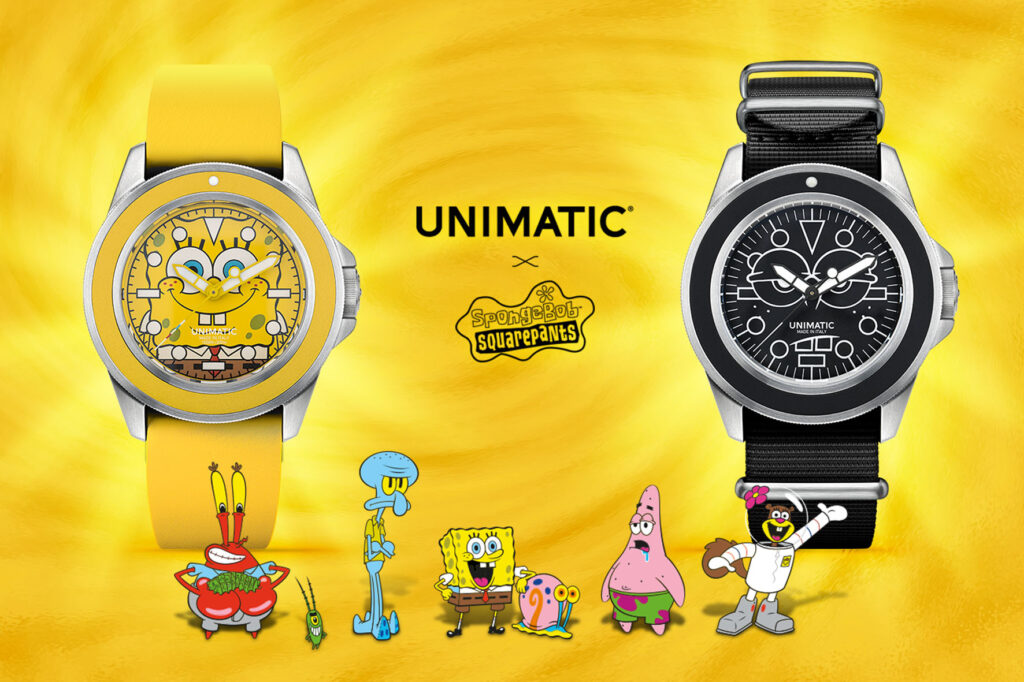
An aspect which is not often highlighted but that I consider essential: many micro-brands are successful with one model but stop there, you have produced four “families”, all of which are very successful. What is your secret?
SIMONE: It’s the speciality of the house! Giovanni and I are specialists in this: designing. And the fact that our collections appeal to the public as well as to insiders, like you or the guys at Hodinkee, is a source of great pride for us.
After Colette, was there another epochal transition leading to what you are today?
GIOVANNI: Immediately after the first Uno A series came the Uno B. We started to gain visibility, as I said, first thanks to Colette and then also thanks to Grimoldi in Milan. But we still didn’t have access to a wider, generalist audience. Then, in December 2016 came Jason Heaton’s U1-B review on Hodinkee. We had no relationship with Hodinkee at the time. That article, which was not supported by our advertising investment in the brand’s early days, was another turning point in terms of the huge visibility it gave us in the industry, plus the fact that the orders we received that day represented our orders average for two months! So if Colette marked the approval of the “Fashion-Lifestyle” world, Hodinkee marked the approval of the watchmaking world in the strict sense. And for free! Considering that nowadays we receive proposals daily from media and influencers in the sector who may have 400 followers proposing to publish articles for a fee, well, the approach of one of the world’s biggest players, genuinely interested in writing about novelties, was very welcome.
Above all, such a deontological approach is good for the whole industry, so a round of applause to the guys at hodinkee! Having said that, Japanese or Swiss? Since historically you have used the seiko NH35A, and now also the Sellita SW200-1, on the special edition Swiss Series. What can you tell us about it?
SIMONE: The real difference, rather than in quality or reliability, is in the thinner Sellita case, which makes it possible to reduce the thickness of the watch. And thinner cases are more beautiful, at least from our point of view, also considering the fact that our cases’ diameter ranges from 38.5 to 41 millimetres, including the bezel, so the overall harmony of thinner cases that are already fairly small in diameter is guaranteed.
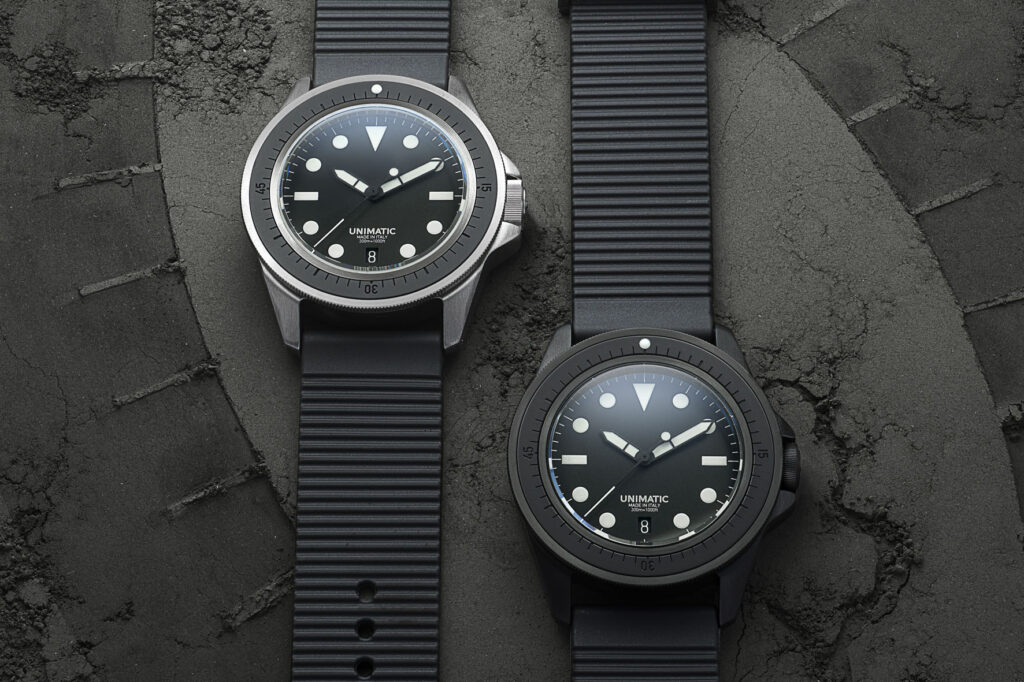
I’ll say it over and over again. You haven’t done anything wrong: name, logo, overall image, products… How did you get to the name UNIMATIC?
SIMONE: The basic idea was to give a sense of functionality, together with the fact that Unimatic gives the idea of a unique, numbered product with an automatic movement. In short, something immediate. The logo itself is just as simple and functional, ultra-readable. In any case, we always went about it keeping in mind the aesthetics of the product, which is also minimal and functional, as is the packaging.
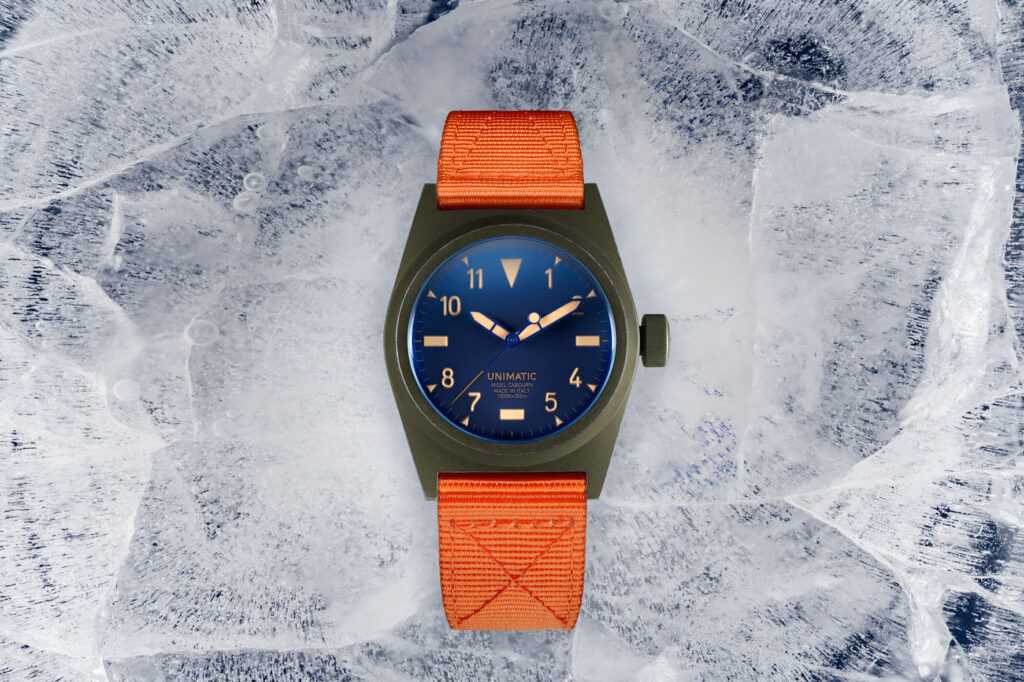
Image, product, packaging, everything is consistent. And what do you want to be when you grow up?
GIOVANNI: On the one hand, our attitude is based on the fact that we are industrial designers. On the other hand, our philosophy is simple: we pursue an incremental process. Meaning that with each new release we improve the product, both from the point of view of the overall execution, design and materials, and from a technical point of view, for example by adopting Sellita. With Hodinkee we made a GMT, a complication that was missing in our collection.
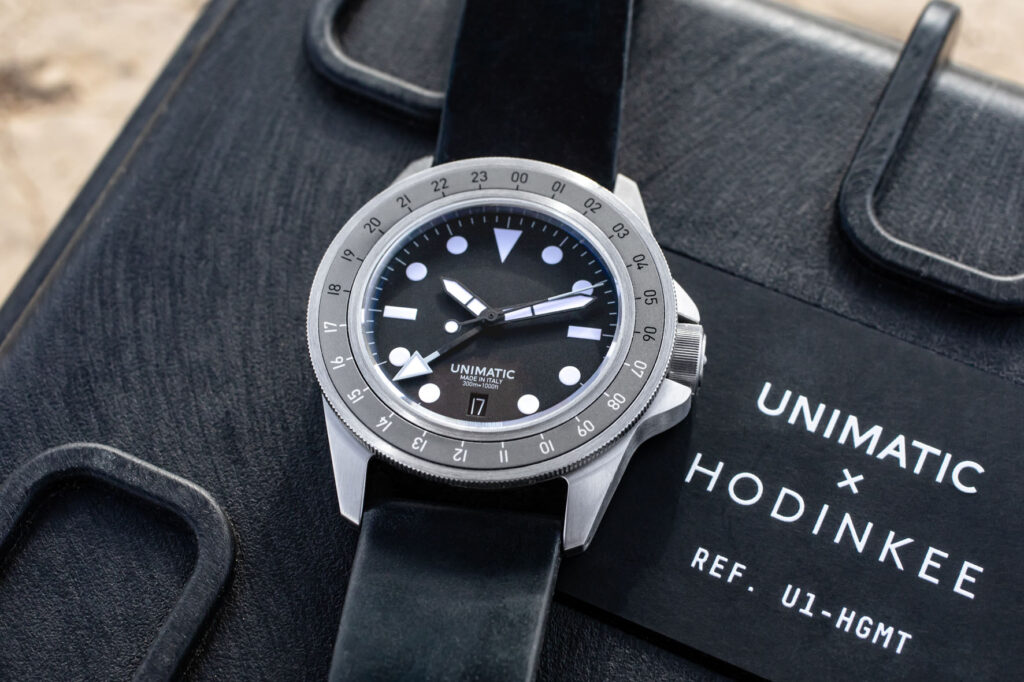
In the future we will certainly experiment with other complications and new case materials. Then we will keep taking special orders. In the sense that, from time to time, we make orders for individuals or companies. In doing so, we get special requests, which if they interest us from a design point of view, we can also carry out as a product for the end customer. For example, we engrave watches in the Brescia area, in Val Trompia, for one customer. Recently, we made 18-carat gold cases, which in terms of characteristics and cost represent a very different segment from the one we usually operate in, but we were happy to make them for a specific customer. For now, we have entered this segment on tiptoe, but there are other customers interested in this very high segment, so we will continue. Generally speaking, however, we are always willing to make products on request, both for materials we are not used to and also, why not, to make a minute repeater. There is no end goal for Unimatic. We go ahead and seize the opportunities offered by the market. Above all, we make a product that makes us proud. So we want to continue on this path, whether it costs 500 euros, 5 thousand or 50 thousand euros. We always aspire to the same satisfaction.
Who are your competitors?
GIOVANNI: I’ve been thinking about it for five years and I still haven’t identified them. In the sense that we have this uniqueness, for better or worse, including our special editions. We do things differently. We started out for fun and to gratify our passion for design. To see our “imagined watch” in the real world. Other brands who feel they are our competitors started out as well-planned entrepreneurial projects, choosing watchmaking over eyewear. We, on the other hand, as I said for better or worse, had this specific attitude. This is what differentiates us, even though we keep admiring the work of others. And it gives us a perhaps romantic touch that we don’t dislike at all.
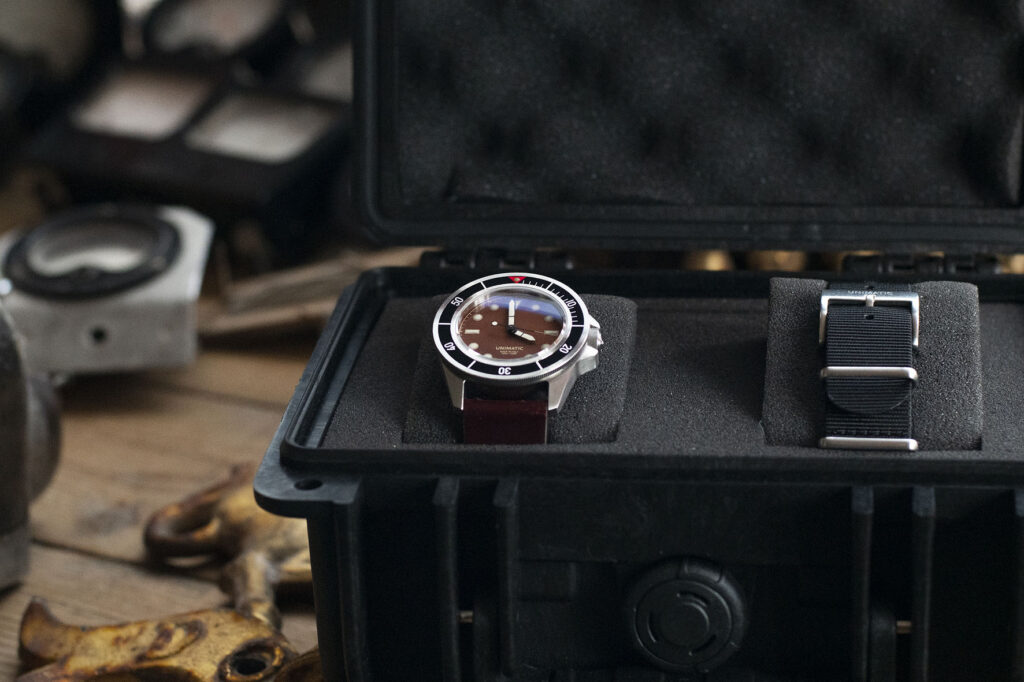
What do you think in general about watchmaking today?
SIMONE: Today, overall, the product is too disconnected from its real value. We too have sold-out models on Chrono24 that are worth three times the list price. Take our Nasa. It was made in 50 pieces and originally sold for 650 euros. Today you can’t find it for less than 3,000 euros. But it makes sense. We can say the approach is still rational, because, paradoxically and so to say, it is much rarer than any contemporary Patek.
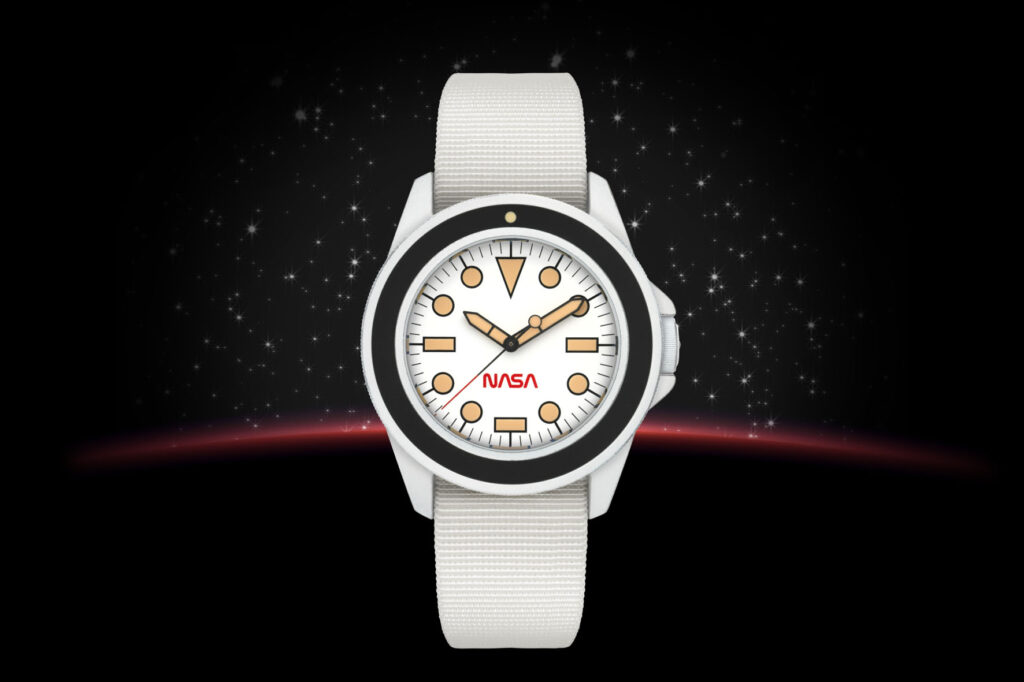
GIOVANNI: Frankly, I can’t stand waiting lists, which perhaps even favour us. And just as sincerely, I find it incomprehensible to wait three years – I’m just saying a random number – for a normal diver, or even worse, to overpay to get one right away. Personally, I would not play this game. I also find the idea of a waiting list for models with an annual production of one hundred thousand or three hundred thousand equally incomprehensible. I would feel a little taken for a ride. With the risk that everything that goes up may one day come down. All this makes me feel part of a human category that I can’t fully appreciate, and to which I wouldn’t want to be associated. It’s the same in fashion. I frown at people wearing sweatshirts with Balenciaga written in big letters. In watchmaking, we are now used to products made for a public that wants Balenciaga in big letters. Fortunately, in our own small way and in our own price range, we are proud to represent an alternative to the dominant school of thought.
By Michele Mengoli

